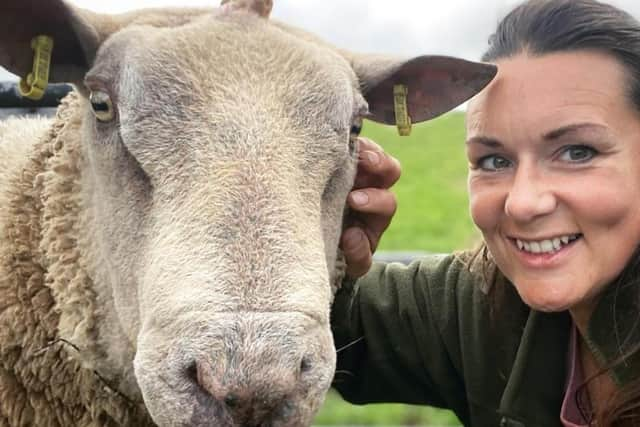Nature Friendly Farming Network: Bronagh O’Kane on understanding what makes soil healthy
and live on Freeview channel 276
I reluctantly became a mechanical engineer and worked in the RAF for 12 years. After this, I ran my own business for seven years and spent another two in furniture manufacturing.
Three years ago, I returned to the family farm to see if I could make it work. I was told our ‘bad’ soils would be the biggest barrier to success. We farm on heavy clay, which is difficult to work with but rich in nutrients and organic matter. Rather than seeing them as a barrier, I wanted to find a way to make them function to their full potential. This began what has become an obsession to better understand how to make the ground that we work, work better for us.
Advertisement
Advertisement
I had to understand why our soil had become dysfunctional. I started with in-depth soil tests, dug holes, and looked carefully at the insects there. One of the first things I noticed was how many worms were in our farmyard manure but strangely absent from our soil. I learned that there are loads of different types of earthworms and that red worms could do a great job at absorbing organic matter. I also learned that their dung is one of the most nutrient-dense materials you can find.


I began investigating how we could use worms to compost waste material to help feed my soil. I set up worm beds to harvest the worm’s dung which I then mixed with farmyard manure in the muck spreader. When diluted in water and aerated for a short time, it could be spread on the fields without harming plants or animals and increasing soil life. You could compare soil to a factory filled with workers. If you give it the right conditions, it will increase in number, working to improve the environment and feed our grass what it needs when it needs it.
After a few months, I noticed the grass was a little greener, and I could see it was working. Yet I knew this was a sticky plaster remedy. This boost of microbes to my soil would not self-sustain because I knew my other soil factors were not in great health.
To achieve genuine soil health, you need to focus on three key areas: the biological, the chemical and the physical. I was working mainly on biology, but the structure of my soils had big room for improvement. Clay is easily poached and compacted, leaving a poor texture. Without tiny pockets of air, soil life suffers, and plant roots will struggle to find water and nutrients. When it rained, our soils became waterlogged, and in drought, they easily cracked. To fix compaction, I have been increasing the diversity of our swards with a mixture of grasses, herbs and legumes, with a dose of worm manure to give it a boost. They should help improve the soil structure with various root depths, and a diversity of plant types will benefit soil life. These little factory workers will hopefully work with me on a journey of improving the health of my soils, my animals' health, and the farm's economic viability.
It’s early days yet, but the results are promising, and I’ll continue to work on improving the greatest asset every farmer has: the ground beneath their feet.